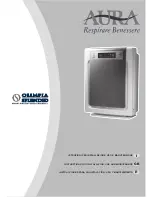
6
ENGLISH
Features
1. Dust collector extension
2. Dust collector
3. Release button
4. On/Off switch
5. Low battery charge indicators
6. Battery compartment
Assembly
Installing the battery pack (fig. A)
X
Insert the metal terminal end of the battery pack (8) into
the battery compartment (6) until you hear the lock click
into place and the VPX™ logo shows through the
window.
Warning!
The battery will only fit one way, do not force it. If
the battery does not fit, remove it and put it in the other way.
Removing the battery pack (fig A)
X
Press the battery pack release button (7) and firmly pull
the battery pack (8) out of the battery compartment (6).
Charging the batteries (fig. B)
Warning!
Do not charge the battery at ambient
temperatures below 10 °C or above 40 °C.
Note:
The charger will not charge a battery pack if the cell
temperature is below approximately 0 °C or above 60 °C.
The battery pack should be left in the charger and the
charger will begin to charge automatically when the cell
temperature warms up or cools down.
X
Plug in the charger (9) and switch on at the mains.
X
Insert the battery pack (8) into the charger. Make sure
that the battery pack is fully seated in the charger (9).
X
The charging indicator (10) will flash continuously
(slowly).
X
Leave the battery to charge for at least 5 to 6 hours.
X
The charge is complete when the charging indicator
(10) lights continuously
The charger and the battery pack can be left connected
indefinitely with the LED illuminated. The LED will change to
flashing (charging) state, as the charger occasionally “tops
off“ the battery charge.
The charging indicator (10) will be lit as long as the battery
pack is connected to the plugged-in charger.
Charge discharged batteries within 1 week. Battery life will
be greatly diminished if stored in a discharged state.
Charge indicators
If the charger detects a problem with a battery pack, the
charge indicator (10) will flash at a fast rate.
X
If this occurs, re-insert the battery pack (8).
X
If the problem persists, put a different battery pack in the
charger to determine if the charger is OK.
X
If the new battery pack charges correctly, then the
original battery pack is defective and should be returned
to a service centre for recycling.
X
If the new battery pack gives the same indication as the
original, take the charger to be tested at an authorized
service centre.
Note:
It may take as long as fifteen minutes to determine that
the pack is defective.
If the battery pack is too hot or too cold, the LED will
alternately blink fast and slow, one flash at each speed and
repeat.
Battery chargers - daisy chaining (fig. C)
Single and dual port chargers can be electrically connected
in any order up to a maximum of 4 chargers. Each charger
has a power-in cord (11) which plugs into the electrical outlet
and a power-out cord (12) which plugs into the next charger.
To connect the chargers in a daisy chain:
X
Plug the power-in cord (11) into an electrical outlet.
X
Remove the power-in cord from the next charger and
plug in the power-out cord (12) rom the charger that is
now plugged into the outlet.
X
Repeat this process for the remaining chargers.
Chargers that are daisy chained together operate
independently as though each one was plugged into a
separate outlet, therefore a battery can be removed from
anywhere along the daisy chain without affecting the other
chargers.
Fitting the accessories (fig. D and E)
These models are supplied with some or all of the following
accessories:
X
A brush tool (13) for furniture and stairs.
X
A crevice tool (14) for confined spaces.
To fit an accessory, proceed as follows:
X
Take the accessories from its storage position on the
appliance (fig. L).
X
Insert the appropriate accessory into the front of the
appliance.
Use
Adjusting the dust collector (fig. F)
X
Extend the dust collector (2) by pulling the dust collector
extension (1) until it locks into position.
X
Retract the dust collector extension (1) by pressing the
area (15) marked with an arrow and pushing the dust
collector extension (1) back into the dust collector (2).
Switching on and off (fig. G)
X
To switch the appliance on, slide the on/off switch (4)
forward.







































